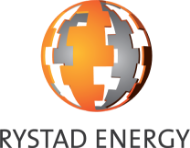
Vaca Muerta shale patch could produce 1 million bpd in 2030
Crude oil production from Argentina’s burgeoning shale patch, Vaca Muerta, could surge in the coming years and top 1 million barrels per day (bpd) by the end of the decade – but only if takeaway capacity and rig availability do not limit growth. Rystad Energy’s modeling shows that if production is relatively unimpeded, oil output could realistically grow from 291,000 bpd in February 2023 to more than 1 million bpd in the second half of 2030.
The forecast growth could lift Vaca Muerta’s profile and position it as a leading source of shale production, alongside the likes of the Bakken or Eagle Ford developments, two of the US’ world-class shale basins. It would also help the Neuquen region become a net oil exporter, potentially contributing $20 billion in total revenue by 2030. These increased crude exports will make their way to South American neighbors Brazil, Chile and Peru, as well as the US and Europe.
Still, big question marks remain, which could potentially alter our long-term growth outlook. Takeaway capacity constraints linger, and rig availability remains an ongoing concern. The learning curve for operators in the basin has been steep, and they will need to continue this trend to maximize their production potential. If all industry participants work together to address these constraints before they become critical, output could top 1 million bpd sooner rather than later.
Information Source: Read More “
Energy Monitors , Electric Power , Natural Gas , Oil , Climate , Renewable , Wind , Transition , LPG , Solar , Electric , Biomass , Sustainability , Oil Price , Electric Vehicles,

